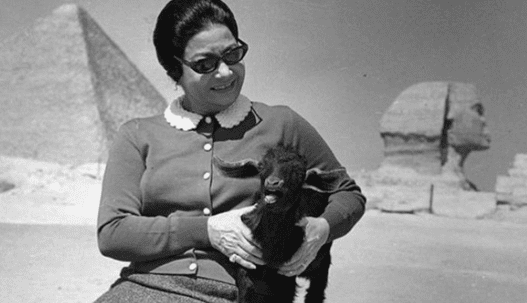Ms. Umm Kulthum ranked 61st on the list of the 200 best singers in history. This came within the classification published by the American Publishing Magazine “Rolling Stone” of the greatest singers around the world. The rating was based on the opinions of music critics, and Umm Kulthum was surpassed by Michael Jackson and Rihanna.

According to critic Will Hermes, Umm Kulthum’s voice is unparalleled in the world of singing and has represented the soul of the Arab world for decades, as the only and unique one in the world.
The magazine described Umm Kulthum’s voice as “resonant”, which easily expresses feelings and emotions, despite the variety of topics covered in her songs. The magazine stated that singer Beyoncé used Umm Kulthum’s song “Enta Omry” in designing her artistic tour in 2016.
‘Enta Omry’ is one of her best songs, written by the poet Ahmed Shafiq Kamel and composed by Muhammad Abdel-Wahhab. It was sung by Umm Kulthum at a famous concert in 1964.
Umm Kulthum is one of the most famous Egyptian and Arab singers and is considered one of the most important Arab singing voices. She has many wonderful songs that have delighted many generations as ‘El atlal’ was ranked among the best hundred works of art of the last century. Riyad Al-Sunbati was the composer. She flies in the space of meanings and words, then dives into the seas of melody, to catch the hearts of the listeners and lovers with the nets of her voice.
The song uses most of the vernacular Arabic maqams, and this is considered the harvest of years of Al-Sunbati’s greatness. Kulthum is an exceptional case, she passed away nearly 50 years ago and is still present in her art.
Perhaps the researcher in Umm Kulthum’s voice will find many artistic features that apparently justify the high status of “Al-Sit” or the Lady, but these specifications are not solely responsible for shaping this phenomenon. Rather, there are factors related to her personality and intelligence that had a great impact on what she reached.
Technically, Umm Kulthum has a very strong contralto voice (the rough voice of women), which reaches the middle of the mezzo-soprano region (the medium-pitched women’s voice) and is luxuriously furnished with 16 musical notes from that vocal region.
It is also characterized by tremendous capabilities to change the nature of the singing performance according to the need, as it yells grief or cheers with joy, groans in pain or gets angry, and may have to move away from the microphone. This is accompanied by strong, sober, and sincere physical emotions, as she shakes her clutched handkerchief with fingers that do not stop rubbing against each other.



